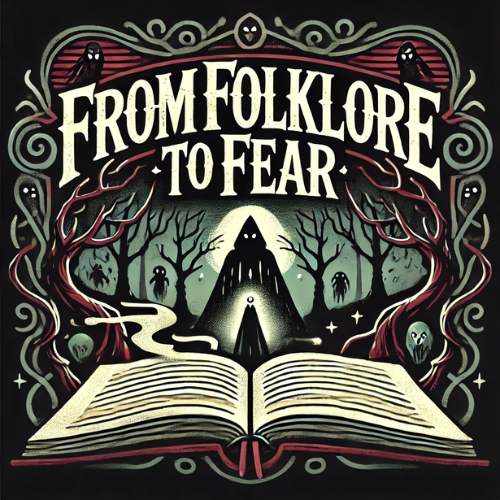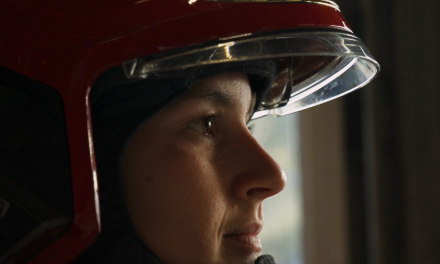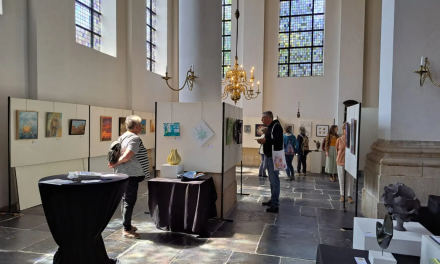Using folklore in horror media is a subgenre that has been going on for years; it is almost as old as the genre itself. Moviemakers use folklore from different cultures to tell their stories. In some media, it is used correctly, but that is not always the case.
The term folk horror is an umbrella term that is used for these two genres. This term originated in 1970 when it was mentioned in the British film magazine Kine Weekly by reviewer Rod Cooper. In 2004 Piers Haggard, director of The Blood of Stan’s Claw, used the same term in an interview.
To put it simply Folk Horror could be every horror media that uses folklore elements to progress the story and create fear factors. Folk Horror however does not lean in on jump scare tactics or bloody imagery. Instead, the story is told through local folklore. The genre dives into mythology and legends that are intertwined with history and culture. Folk horror plays into the fears of childhood that have been linked with fables.
Horror meet folklore
There are some discussions about that every horror media is just Folk horror. In someway that is correct, the horror genre takes allot from folktales, mythology, and legends. “There are only two subgenres of folklore that really get used for horror movies, Legends and Urban Legends,” Theo Meder, folklore researcher at the Mytthers instituut, explains. “The traditional legends are about demons, ghost, witchcraft, and magic. Things that are supernatural things people were afraid of. Urban legend stories are more about the fears of today, more realism,”
Different movies make use of ghosts and there are different believes and cultures who have different ghosts and handle those in diverse ways. If we look at the past ten years, there are 239 movies that are clearly derived from folktales from different culture. The legend that gets used the most is demons with sixty-eight productions made about them. The year 2018 was the year where the most movies came out that were based on folktales about forty-two movies. There are fewer folk series and games. As those usually come from own creations from the person that made them than it really be based on folklore. Sometimes series also use multiple folklore in their show to move along the narrative, shows like Supernatural and Grimm use different folklore. “In movies you see quicker that the legend gets changed but that’s because it’s how the director sees it,” Meder acknowledges. “Sometimes people want it too. So, the makers give a spin to a particular story. That is just how it goes. Every writer, every storyteller and every director can make their own stories from existing folklore,”
The use of my culture
Non-western folktales get used in the horror genre to create another narrative to the story. It offers a wide range of stories that are full of traditions and supernatural or mystical elements. Although non-western folktales create a new insight to the genre, it does not always get portrayed right. Here is the significance of cultural story decreased into exotic elements, without taking the original context into account. This can lead to stereotyping. “Since I was a child, it was common knowledge that Dracula was based on a historic Romanian figure and on Romanian mythology,” Gia Pitec, a Romanian student, explains. “But I thought Vampires were our mythology not Strigoi. Because often you see in the media Transylvania and Dracula and all that. It is never the right bits of folklore. It is just what the modern media perceptions of these creatures have shipped into and so the details of the story are the same. They do not particularly care for the details and intricacies of what made a Strigoi a Strigoi,”
Gia does however think that the use of folklore in horror movies does help, as Romanian kept allot of Pagan believes they are not as wild followed as before. Using the folklore in horror movies shows those believes and myths to a bigger audience. It also brings in more tourism as people want to visit Dracula’s castle. “I think it only harms in the way that children do not really grow up knowing the actual folklore. But then again kids can also become interested in it and learn about it, like I did,” Gia explains. “It is nice to know that great mythological creature, that’s talked about in the media quiet often is based on if not only Romanian folklore,”
When used wrong
Usually when making movies about folklore most of the time the same stories get used. As they have already been moulded into something that here and there can be changed to differentiate from other movies, shows or games. This happens to the folklore from demons as there a different demons in different cultures. Sometimes filmmakers do venture out of their comfort zone and make a movie about something different, as the movie Tarot did. In 2024 Sony Pictures brought out a new horror movie called Tarot. This movie makes use of the tarot card to proceed with its storyline. Only the tarot cards get misinterpreted to make the storyline interesting. Tarot cards are usually a way to show insight into different paths that are available for you and the choices you can make. In the movie, they are used as a death sentence. The group gets haunted by the haunted versions of the cards they got. There has already been a misconception about tarot cards that they predict the future and that the card “Death” is a bad omen when it is not. So, making a movie where the cards get used in this forbidden, evil way makes it not better to improve the image of the Tarot cards. They initially were made as playing cards and later became cards to give you insight. In other movies, a person from another culture gets used to giving cryptic information or warnings about the curse or monster.
The future of folklore in horror media
Some filmmakers take national styles to make their folklore more appealing to a bigger public. Like in Turkish horror the folktale about the Djinn, gets merged with elements from Hollywood and Asian horror. This takes the risk that the stories lose their unique style and culture and get taken by the well-known horror genre. “I would love to see more Romanian mythology and folklore be integrated in horror,’ Gia suggests. ‘As it has a lot of potential, like the Lele and Zmeu, I think that they would be great to be part of horror media. The vampire is not bad it is just overused in my opinion. By this point it has been beaten to undeath by horror media. Maybe look at something else,”
The media makes use on the growing popularity of Folklore in horror but usually aim their attention towards the simplified version of the story. “There is no copyright on Folklore, like there is on other stuff. The style of Snow white’s dress is copyrighted but the story you can make your own version off,” Meder explains. Because of that the story does not need to be the exact same and can be changed, however. This leads to repeating stereotypes and minimalizing from the non-western folktales in the horror genre.
Click this button to explore different Folklore from around the world.

From Folklore to Fear the podcast about exploring different Horror media and the folklore they use in their product. This podcast talks about different horror movies, tv shows and games. Listen here to the first episode about the Horror Game Until Dawn. The next episode will be about the Horror Movie The Hallow.
Data explanation + credits music
The data used in this article comes from putting all the Horror movies, tv show and games from 2014 and 2024 in a Excel sheet and by looking into the movie storyline base it on if it uses Folklore or not and what kind of Folklore.
Music used in Podcast:
Incantation by Scott Buckley | www.scottbuckley.com.au
Music promoted by https://www.chosic.com/free-music/all/
Creative Commons CC BY 4.0
https://creativecommons.org/licenses/by/4.0/
The Summoning by Scott Buckley | www.scottbuckley.com.au
Music promoted by https://www.chosic.com/free-music/all/
Attribution 4.0 International (CC BY 4.0)
https://creativecommons.org/licenses/by/4.0/




